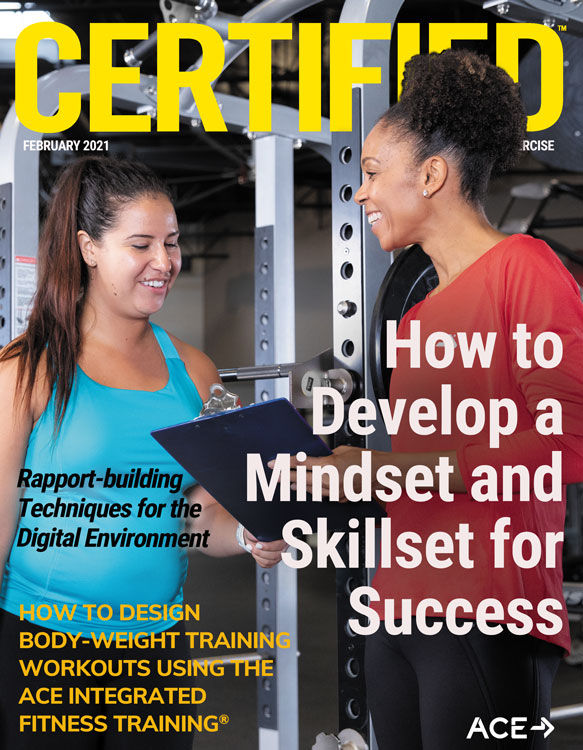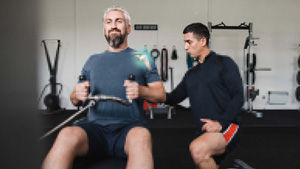
Research Confirms Exercise Can Help Relieve Chronic Low-back Pain

The jury’s still out about why scientists think exercise is beneficial for people with chronic low-back pain, according to a new University of New South Wales (UNSW) evidence review.
The purpose of the study, which was published in the journal Musculoskeletal Science and Practice, was to better understand why back pain researchers think exercise helps people with chronic low-back pain (CLBP). However, while previous research has confirmed that exercise can offer relief from CLBP, this new review underscores the fact that researchers are still unsure as to why it’s beneficial.
The study’s senior author Dr, Matt Jones, an accredited exercise physiologist, clinician and researcher, says the researchers were surprised to find there was no clear agreement among scientists about why they think exercise works for CLBP.
“Despite decades of research in the area and more than 100 studies we analyzed in our review, we still do not have a good idea of why exercise might be effective for CLBP,” Dr. Jones says “Both in Australia and globally, low-back pain is the leading cause of disability and has been for the past few decades.” CLBP also is financially burdensome, both individually and on society, particularly in terms of lowered productivity, lost wages and increased healthcare costs.
“A lot of treatments have stemmed from studies for people with CLBP (for example, medications, manual therapy, cognitive behavioral therapy),” continues Dr. Jones, “but the one with the most consistent evidence of benefit is exercise.”
CLBP is typically defined as pain felt on the back of the body between the bottom of the ribs and the bottom of the backside, lasting for three months or longer. “It’s the kind of pain that extends beyond the expected healing time of the body tissue. We also know that for many people, it is part of their daily lives and can significantly impact their quality of life,” he says.
“Today’s evidence suggests CLBP likely comes from the brain and nervous system being a bit overprotective and generating a pain response—despite no obvious physical damage to the body.”
Exercise Improves Fitness, Mood and Confidence
The researchers conducted a systematic review of the literature in the Physiotherapy Evidence Database (PEDro) on why back-pain researchers think exercise helps adults (under the age of 65) with CLBP. They analyzed 110 research papers, which included several thousand study subjects with CLBP. Collectively, the studies spanned almost three decades and were conducted in a range of countries and regions, including Australia, the United States, China, Brazil and Europe.
According to Dr. Jones, although there was a lack of agreement in the literature as to why researchers thought exercise worked for CLBP, the systematic review did find some common ground.
“Researchers proposed common reasons as to why exercise was beneficial, including improvements in fitness—for example, core stability, aerobic fitness—and improvements in mood and confidence,” he says. However, the effects of these proposed reasons on outcomes for people with CLBP were seldom examined in the papers. “In one-third of studies,” Dr. Jones explains, “researchers did not even propose a reason for why they thought exercise might be effective.”
So, why can’t researchers come to a consensus?
“Chronic pain is tricky and there are a lot of factors that can contribute to it,” says Dr. Jones, “so, it’s not simply biological aspects of tissue damage, but there are psychosocial elements at play, as well things like a person’s mood or confidence in their own abilities to do something,” he said.
“There have been trends in research over time, where everyone focuses on a ‘flavor of the month,’” explains Dr. Jones, “like motor control or McKenzie therapy, for example, but because the effects of exercise are broad and it impacts many different systems in the human body, it’s difficult for researchers to pinpoint exactly why they think it might be benefiting people with pain.”
Findings to Help Future Research on Exercise Benefits
Prof. James McAuley, who leads a group of 30 researchers focused on improving the management of chronic pain, explains that the evidence review formed part of a larger body of work aiming to understand why exercise works for people with CLBP.
“Future primary studies could involve randomized controlled trials designed to investigate the mechanisms of benefit identified in our review. For example, mechanisms such as improving strength, improving self-efficacy—someone’s belief in their ability to perform tasks despite pain—and others,” McAuley says.
McAuley suggests that the answer could also be achieved by using a technique called ‘mediation analysis,’ which “seeks to identify mechanisms of benefit in trials that have already been conducted.” By understanding how and why exercise works, researchers believe they’ll be able to design treatments to maximize its benefits.
“Pain is very complex,” continues McAuley, “so in all likelihood, it will be a combination of many factors that lead to consistent improvements in pain and function after exercise for people with CLBP.”
What the Research Means for Health and Exercise Professionals
Although the systematic review did not aim to establish which exercises were most effective for people with CLBP, Dr. Jones recommends that people engage in meaningful activities.
“Many scientists have investigated this question before and the short answer is, there are no specific exercises recommended to alleviate CLBP,” he says. ‘But there are literally hundreds of studies on exercise for people with chronic pain, not only CLBP, and researchers consistently find exercise is one of the most effective treatments. It might not cause huge reductions in pain and disability, but it does help.”
Dr. Jones says that people with CLBP should be urged to remain physically active. However, even clients who have been cleared to exercise by their healthcare team may need some reassurance that it is safe to do so.
As a health and exercise professional, you are a trusted source of health and fitness information for your clients, and research-based information such as this study is worth sharing, particularly for those who experience CLBP. “It is rare that chronic pain is caused by ‘issues with the tissues,’” says Dr. Jones. “[This] is probably the simplest, best advice for someone with chronic pain.”
Fortunately, there are many options for how someone with chronic pain can stay active, including structured exercise and lifestyle activities such as gardening or walking the dog.
Of course, proper progression is key, as is following the guidance of a client’s healthcare provider. “It is important the activities are progressed slowly and if they do aggravate someone’s pain slightly, that is O.K., because staying sedentary is no longer a recommended option,” says Dr. Jones. In other words, the risks of staying sedentary are greater than the risk of aggravating back pain.

More Articles
- Certified™: February 2021
How to Develop a Mindset and Skillset for Success
Contributor
- Certified™: February 2021
How to Design Body-weight Training Workouts Using the ACE Integrated Fitness Training® Model
Health and Fitness Expert




 by
by 




